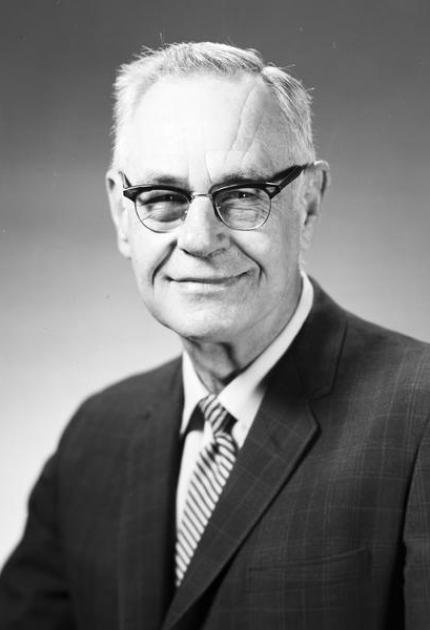Alumnus William Nebergall inducted into Inventors Hall of Fame
Alumnus William Nebergall was posthumously inducted into the National Inventors Hall of Fame in May 2019, honored for his ground-breaking work leading to the invention of stannous fluorite toothpaste—the first decay-preventing ingredient used in Crest® toothpaste.
Nebergall was born on Dec. 21, 1914, and died on Sept. 2, 1978. A native of Cuba, Ill, he received a Bachelor of Education degree from Western Illinois State Teachers College (now Western Illinois University) and completed a Master of Science degree in chemistry at the University of Illinois at Urbana-Champaign. This was followed by a teaching appointments in chemistry at State Teacher’s College in Johnson City, TN, until 1941, and the University of Kentucky until 1942. From 1942 to1944, he taught chemistry at the University of Minnesota. While at Minnesota, he completed his doctorate in organic chemistry. He was a professor at Indiana University from 1949 to 1975.
Beginning in 1950, Nebergall worked with Joseph C. Muhler and Harry C. Day in their study of fluorides in relation to dental cavities. According to the National Inventors Hall of Fame website: Nebergall and dentist and biochemist Joseph Muhler "developed a cavity-preventing product using stannous fluoride, which built on research begun in the 1940s at Indiana University by then-undergraduate Muhler and biochemistry professor Harry Day. In 1956, Crest® toothpaste was introduced nationally. Four years later, it became the first toothpaste to be recognized by the American Dental Association as an effective decay-preventing agent.
"At Day’s suggestion, Muhler was investigating a recently published method for measuring the fluoride content of teeth and bones. By the late 1940s, research showed that fluoride ions made tooth enamel harder and more resistant to attack, and the idea of using fluoride in toothpaste took hold. In 1949, Procter & Gamble Co. began funding Muhler and Day’s research; one year later, Nebergall joined the project. Nebergall worked on the inorganic chemistry aspects, producing high-purity stannous fluoride and compatible abrasives. Ultimately, Nebergall received three patents related to compounds created during his research.
"The product was licensed to Procter & Gamble and, in the mid-1950s, the team introduced a formulation containing stannous fluoride. Stannous fluoride toothpaste was introduced in limited test markets in 1955. Crest debuted nationally in 1956. By the late 1970s, a steep nationwide decline in cavities was attributed in part to the widespread use of fluoride toothpaste. Today, all toothpastes with the ADA Seal of Acceptance must contain fluoride." Citation: https://www.invent.org/inductees/william-nebergall
Nebergall authored many publications and was an active researcher with interests were in organogermanium chemistry and the chemistry of organosilicon compounds. He also conducted research in conjunction with the Office of Naval Research and the United States Public Health Service. In 1959, he was awarded a National Science Foundation faculty fellowship to conduct research in Germany. He collaborated with fellow professor F.C. Schmidt to write a combination textbook and laboratory manual. This resulted in two textbooks, College Chemistry and General Chemistry.
